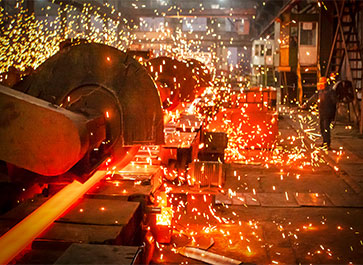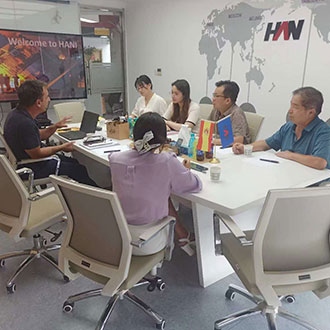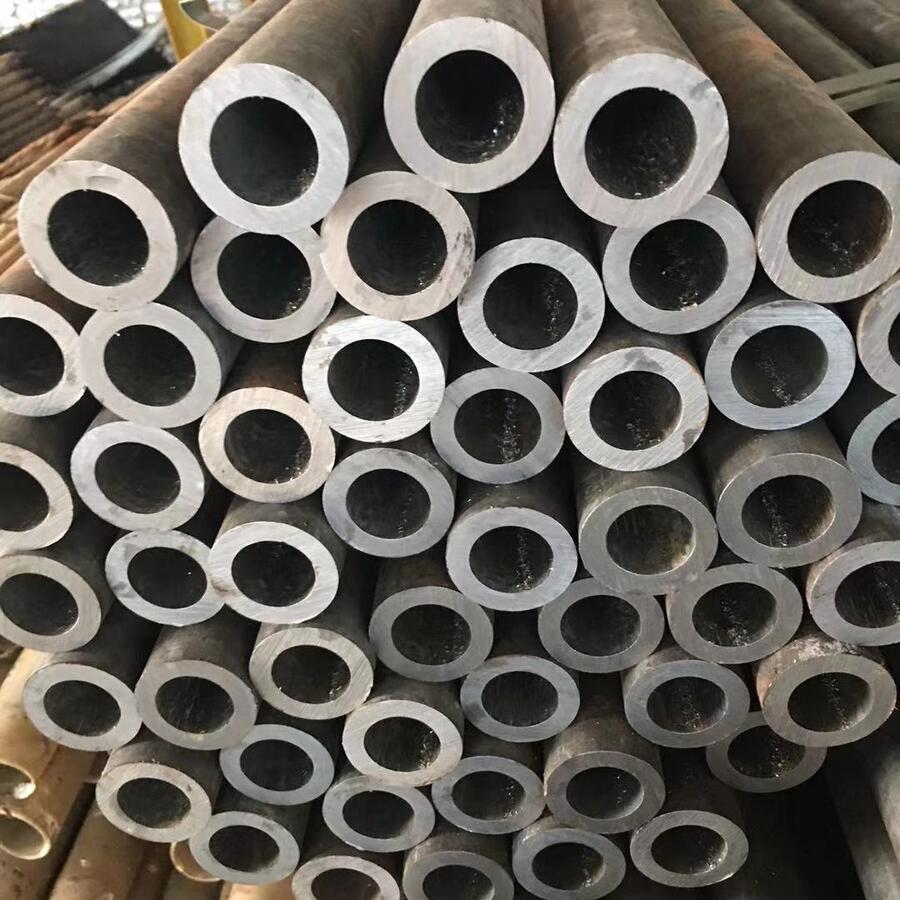Введение
Эволюция промышленного сектора тесно переплеталась с развитием металлургических процессов.. Среди них, а стан горячей прокатки стали выделяется как ключевая технология в превращении литых заготовок в пригодные для использования стальные изделия.. Этот процесс не только улучшает механические свойства стали, но и облегчает производство высококачественного стального проката различного назначения.. В этой статье, вникаем в принципы работы, технические параметры, и рыночные тенденции стан горячей прокатки стали, предоставление комплексной информации для инженеров, менеджеры, и технические энтузиасты.
Исторически, развитие стан горячей прокатки стали шел параллельно с ростом тяжелой промышленности. Современные усовершенствования повысили производительность за счет автоматизации., мониторинг в реальном времени, и оптимизированные системы управления. Путем интеграции инновационных разработок и точных технологий прокатки, производители могут добиться превосходного качества поверхности, контролируемые микроструктуры, и повышенные прочностные свойства. Кроме того, интеграция цифровых систем мониторинга и диагностики на основе датчиков еще больше усовершенствовала процесс прокатки, обеспечение высочайшего качества и эффективности в каждом производственном цикле.
Технические принципы и обзор процесса
Фундаментальная концепция, лежащая в основе стан горячей прокатки стали включает нагрев стальных заготовок до высоких температур и пропускание их через ряд роликов.. Высокая температура делает сталь ковкой., позволяя изменить его форму посредством ряда процессов сокращения. По мере перемещения материала через различные стенды, толщина уменьшается, а длина увеличивается, что приводит к получению продукта с улучшенной пластичностью и прочностью..
Ключевые технические аспекты стан горячей прокатки стали включать:
- Контроль температуры: Поддержание оптимальных температур прокатки для предотвращения образования окалины и обеспечения равномерной деформации..
- Конструкция прохода рулона: Точная геометрическая конфигурация роликов необходима для достижения желаемого уменьшения и профиля..
- Управление силой и трением: Эффективная передача энергии необходима для поддержания процесса прокатки и обеспечения однородности продукта..
- Автоматизация и мониторинг: Системы сбора данных в реальном времени интегрированы для непрерывной корректировки параметров., обеспечение стабильного качества продукции.
Передовые системы управления, такие как программируемые логические контроллеры (ПЛК) и распределенные системы управления (DCS), произвели революцию в стан горячей прокатки стали процесс. Эти системы обеспечивают мгновенную обратную связь и облегчают профилактическое обслуживание., которые в совокупности сокращают время простоя и повышают операционную эффективность.
Интеграция цифровых технологий
With the advent of Industry 4.0, the application of digital technologies has transformed the mechanics of the стан горячей прокатки стали. By installing internet-enabled sensors and devices, operators can now monitor various production parameters such as temperature, давление, and strain in real time. Data analytics and machine learning algorithms are applied to optimize the rolling schedule, predict possible failures, and develop maintenance strategies.
This digital transformation also allows for improved resource management and energy efficiency. By analyzing historical production data and real-time sensor readings, manufacturers can better manage power consumption, reducing overall operational costs while minimizing environmental impact. The incorporation of digital twin technology further enables simulation of production scenarios, позволяет тестировать различные параметры прокатки, не прерывая работу производственной линии.
Области применения и понимание рынка
Продукты, созданные с помощью стан горячей прокатки стали процесс широко используется в различных отраслях промышленности, в том числе автомобильная, строительство, судостроение, и энергия. Производимый высококачественный прокат не только обладает улучшенными конструкционными характеристиками, но и соответствует строгим стандартам, предъявляемым современными отраслями промышленности..
Более того, такие организации, как HANI TECH, сыграли важную роль в распространении технических ноу-хау и маркетингового опыта в области металлургического оборудования.. Использование информации с таких платформ, как HANI ТЕХ и ХАНИ ТЕК Металлургия, производители и инженеры лучше подготовлены к использованию технологичных методов производства.. Эти платформы предоставляют ценную информацию о последних тенденциях., ультрасовременные дизайны, и показатели производительности стан горячей прокатки стали и сопутствующее оборудование.
Анализ рынка указывает на растущий спрос на технологически продвинутые стан горячей прокатки стали системы, основанные на строгих стандартах качества и растущем количестве строительных проектов по всему миру.. Поскольку мировой спрос на сталь продолжает расти, производителям рекомендуется инвестировать в современные прокатные станы для повышения производительности, качество продукции, и экологическая устойчивость.
Подробные параметры оборудования и обзор таблиц
Производительность стан горячей прокатки стали измеряется несколькими ключевыми параметрами. Ниже представлена обширная таблица, в которой суммированы технические характеристики и конструктивные особенности, имеющие решающее значение для работы системы.. Эти параметры необходимы для обеспечения эффективности., качество, и эксплуатационная безопасность. Производители часто обращаются к этим подробным спецификациям, чтобы адаптировать мельницу к конкретным производственным потребностям и характеристикам материала..
| Категория параметра | Спецификация | Описание |
|---|---|---|
| Ролики | Диаметр | 500 мм – 1200 мм, обеспечение оптимальной площади контакта с поверхностью. |
| Материал | Высоколегированная инструментальная сталь или чугун, футерованный износостойкими материалами.. | |
| Количество рулонов | Обычно 2 к 5 за стенд, расположены в тандеме. | |
| Термическая обработка | Закалена и отпущена для повышения долговечности. | |
| Система отопления | Тип печи | Печи с шагающими балками или толкательные печи, обеспечение равномерного распределения температуры. |
| Температура нагрева | 1100°C – 1300°C для достижения оптимальной пластичности.. | |
| Тип топлива | Природный газ, масло, или электричество с системами селективной рекуперации энергии. | |
| Изоляция | Высокотемпературные огнеупорные материалы для энергоэффективности. | |
| Время цикла | 3 – 10 часы, в зависимости от размера заготовки и объема производства. | |
| Механическая система | Система привода | Электрические или гидравлические приводы, оснащенные преобразователями частоты.. |
| Сила качения | До 50 Миннесота (меганьютоны) для операций с высокой нагрузкой. | |
| Диапазон скоростей | 0.1 РС - 10 регулировка скорости м/с. | |
| Коэффициент уменьшения | 10% – 80% за проход, оптимизирован для различных участков мельницы. | |
| Контроль напряжения | Автоматическая регулировка с помощью датчиков нагрузки. | |
| Смазка | Усовершенствованные системы циркуляции масла для минимизации трения и износа. | |
| Система управления | Уровень автоматизации | Полная интеграция с системами ПЛК и РСУ.. |
| Интерфейс | Графический интерфейс пользователя (графический интерфейс) и программное обеспечение для мониторинга в реальном времени. | |
| Регистрация данных | Непрерывная запись данных для оптимизации процесса. | |
| Удаленный доступ | Обеспечивает диагностику и обслуживание с помощью устройств Интернета вещей.. | |
| Гарантия качества | Качество поверхности | Управление осуществляется с помощью прецизионных регулировок валков и систем охлаждения.. |
| Точность размеров | Уровни допусков в пределах ±0,5 мм для размеров конечного продукта.. | |
| Однородность материала | Однородная зернистая структура достигается за счет контролируемой последовательности прокатки.. | |
| Методы проверки | Ультразвуковой контроль, вихретоковый контроль, и лазерное профилирование. | |
| Энергетический менеджмент | Потребляемая мощность | Оптимизированные системы привода сокращают потребление до 15%. |
| Рекуперация тепла | Интегрированные системы улавливают отходящее тепло для предварительного нагрева заготовок.. | |
| Выбросы в окружающую среду | Соответствует международным стандартам выбросов. |
Подробные параметры, перечисленные в таблице выше, подчеркивают сложность и точность, необходимые во время эксплуатации. стан горячей прокатки стали. Каждая категория, от роликов до управления энергопотреблением, играет решающую роль в обеспечении соответствия конечного проката строгим стандартам качества и критериям производительности..
Достижения и будущие тенденции
Поскольку отрасли продолжают развиваться, а стан горячей прокатки стали также является свидетелем значительных инноваций. Инициативы в области исследований и разработок сосредоточены на:
- Умное производство: Интеграция современных датчиков и устройств Интернета вещей обеспечивает интеллектуальное управление процессами., профилактическое обслуживание, и оптимизация в реальном времени.
- Энергоэффективность: Постоянное улучшение теплоизоляции, конструкция печи, и рекуперация отходящего тепла имеют решающее значение для снижения эксплуатационных затрат и воздействия на окружающую среду..
- Улучшенная автоматизация: Уровень автоматизации неуклонно растет, обеспечение бесперебойных производственных циклов с минимальным вмешательством человека, снижение погрешности, и обеспечение стабильного качества продукции.
- Технология цифрового двойника: Виртуальное моделирование завода позволяет тестировать различные сценарии производства без необходимости проведения разрушительных физических испытаний., тем самым обеспечивая быстрые инновации и улучшение процессов.
- Материальные инновации: Новые стальные сплавы и композиционные материалы требуют изменения параметров прокатки., стимулирование постоянной адаптации в проектировании мельниц и стратегиях эксплуатации.
Мировой рынок продолжает требовать высокопроизводительную сталь, производимую современными стан горячей прокатки стали удобства. Исследовательские лаборатории и промышленные эксперты по всему миру работают над дальнейшим повышением коррозионной стойкости., предел прочности, и термостойкость проката. Сотрудничество между академическими кругами и промышленностью способствует совершенствованию алгоритмов программного обеспечения для лучшего прогнозирования результатов., и создаются экспериментальные установки, расширяющие границы существующих технологий..
Одной из примечательных тенденций является растущая интеграция возобновляемых источников энергии в производственные мощности.. Растения переходят на солнечную энергию, ветер, и комбинированное производство тепла и электроэнергии (ТЭЦ) системы для уменьшения выбросов углекислого газа и обеспечения устойчивости. Используя данные с таких платформ, как HANI TECH, компании принимают обоснованные решения, чтобы сбалансировать операционную эффективность с экологической ответственностью, обеспечение того, чтобы стан горячей прокатки стали остается лидером в области экологически чистых производственных технологий.

Экономические и стратегические последствия
Экономический эффект модернизации стан горячей прокатки стали является значительным. Внедрение новейших технологий не только увеличивает производственные мощности, но и повышает качество конечного продукта., что имеет решающее значение на конкурентных мировых рынках. Капитальные вложения в модернизацию прокатных станов часто компенсируются сокращением времени простоев на техническое обслуживание., экономия энергии, и рост спроса на продукцию из стали более высокого качества..
Компании, инвестирующие в передовые технологии прокатных станов, имеют больше возможностей удовлетворить рыночный спрос на высокопроизводительные прокатные станы., прочный, и экономичная сталь. Поскольку глобальные инфраструктурные проекты растут, а автомобильная промышленность требует более легких, но более прочных материалов, важность наличия современного стан горячей прокатки стали объект становится более очевидным. Расширенный анализ данных и оптимизация процессов способствуют лучшему прогнозированию рынка и стратегическому планированию., позволяя производителям быстро адаптироваться к меняющимся требованиям сталелитейной промышленности.
Более того, политические инициативы и международные стандарты все больше подчеркивают устойчивость и контроль качества.. Эта нормативно-правовая среда подталкивает производителей к принятию более надежных протоколов обеспечения качества., что, в свою очередь, стимулирует дальнейшие инновации в проектировании и эксплуатации мельниц.. Конвергенция надежных инженерных практик, передовые цифровые технологии, а стратегическое позиционирование на рынке устанавливает новый стандарт для возможностей современного стан горячей прокатки стали.
Проблемы и стратегии смягчения их последствий
Несмотря на впечатляющие достижения, операция стан горячей прокатки стали сталкивается с несколькими проблемами. Высокое энергопотребление, проблемы с терморегулированием, и сильный механический износ компонентов, подвергающихся высоким нагрузкам, могут снизить эффективность работы.. Более того, Колебания процесса из-за нестабильного качества сырья или внешних сбоев могут привести к изменениям в качестве продукции..
Для решения этих проблем, производители реализуют несколько стратегий смягчения последствий:
- Расширенный мониторинг: Внедрение систем мониторинга в режиме реального времени позволяет операторам заранее обнаруживать аномалии и оперативно принимать корректирующие меры..
- Профилактическое обслуживание: Плановое обслуживание, в сочетании с прогнозной аналитикой, помогает свести к минимуму непредвиденные простои и продлевает срок службы ключевых компонентов.
- Оптимизация процесса: Непрерывные исследования в области проектирования валковых проходов, методологии охлаждения, и технологии снижения трения гарантируют, что стан горячей прокатки стали поддерживает стабильность качества продукции.
- Автоматизация контроля качества: Достижения в области сенсорных технологий и систем визуализации обеспечивают превосходные методы контроля., обеспечение выявления и устранения дефектов проката в процессе производства.
Отраслевое сотрудничество, поддерживается исследовательскими инициативами таких учреждений и организаций, как HANI TECH, создает среду, в которой проблемы систематически решаются, и лучшие практики распространяются по всему миру. Через совместные платформы, Производители не только делятся техническими знаниями, но и принимают общие стандарты, которые повышают надежность и безопасность продукции в стан горячей прокатки стали процесс.
Заключение
А стан горячей прокатки стали является краеугольным камнем современной технологии производства стали. Он воплощает в себе пересечение традиционного металлургического опыта и современных цифровых инноваций., обеспечение производства стальной продукции исключительного качества и эффективности. От передовой автоматизации до сложных систем управления технологическими процессами, Постоянное развитие конструкции мельницы отражает стремление отрасли к совершенству..
Как продемонстрировано обширными техническими параметрами и оптимизацией процессов, обсуждаемыми в этой статье., будущее стан горячей прокатки стали яркий. Благодаря постоянным инвестициям в технологию цифровых двойников, устойчивая энергетическая практика, и современные методологии обеспечения качества, производители готовы преодолеть текущие проблемы и проложить путь к дальнейшим инновациям в производстве стали.
В итоге, интеграция передовых исследований, эмпирические данные, и передовые производственные стратегии переопределяют возможности стан горячей прокатки стали в сегодняшней конкурентной промышленной среде. Инженеры, лица, принимающие решения, и заинтересованным сторонам предлагается использовать представленные здесь знания и идеи, дополненные ресурсами, доступными на платформах HANI TECH. (Хани ТЕХ и ХАНИ ТЕК Металлургия)— для стимулирования будущего роста и технологического прогресса.
Постоянно развиваясь и внедряя инновации, а стан горячей прокатки стали несомненно, продолжит оставаться незаменимым активом в металлургической и тяжелой промышленности.. Это не только повышает качество стальной продукции, но и укрепляет конкурентные преимущества производителей, стремящихся к совершенству на все более требовательном мировом рынке..
В конечном счете, независимо от того, являетесь ли вы ветераном отрасли или новичком, понимание тонкостей дела стан горячей прокатки стали процесс и связанные с ним технологии имеют решающее значение. Эти знания позволяют вам принимать обоснованные решения о производстве., инвестиции, и стратегическое планирование. Использование этих передовых технологий и передового опыта работы, как указано в этой статье, позволяет компаниям не только решать проблемы сегодняшнего дня, но и внедрять инновации для будущего — будущего, в котором высококачественная сталь станет основой инфраструктуры и современной промышленности..

ПРИМЕЧАНИЕ:
Если вы хотите узнать больше о знаниях, связанных с электродуговыми печами в сталелитейной промышленности и других аспектах, пожалуйста, следите за каналом HANI на YouTube для получения дополнительной информации.
https://www.youtube.com/channel/UCQ5eAP3i7BddUh6VEQAePGA
https://www.youtube.com/@kevinqian8976/featured
https://www.youtube.com/channel/UCyQRZqd-TpcNO6iRTjY-cDQ




